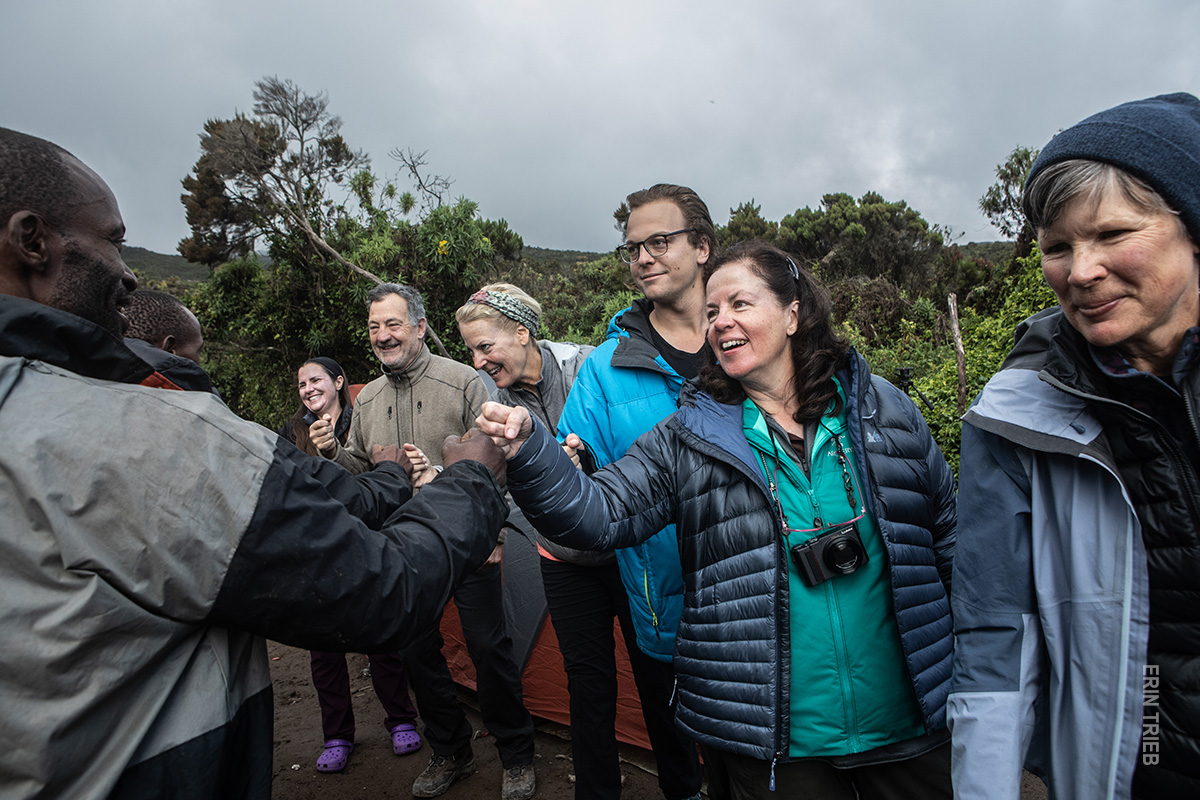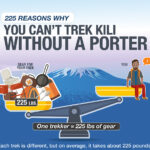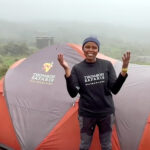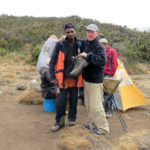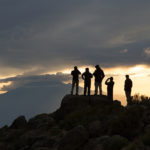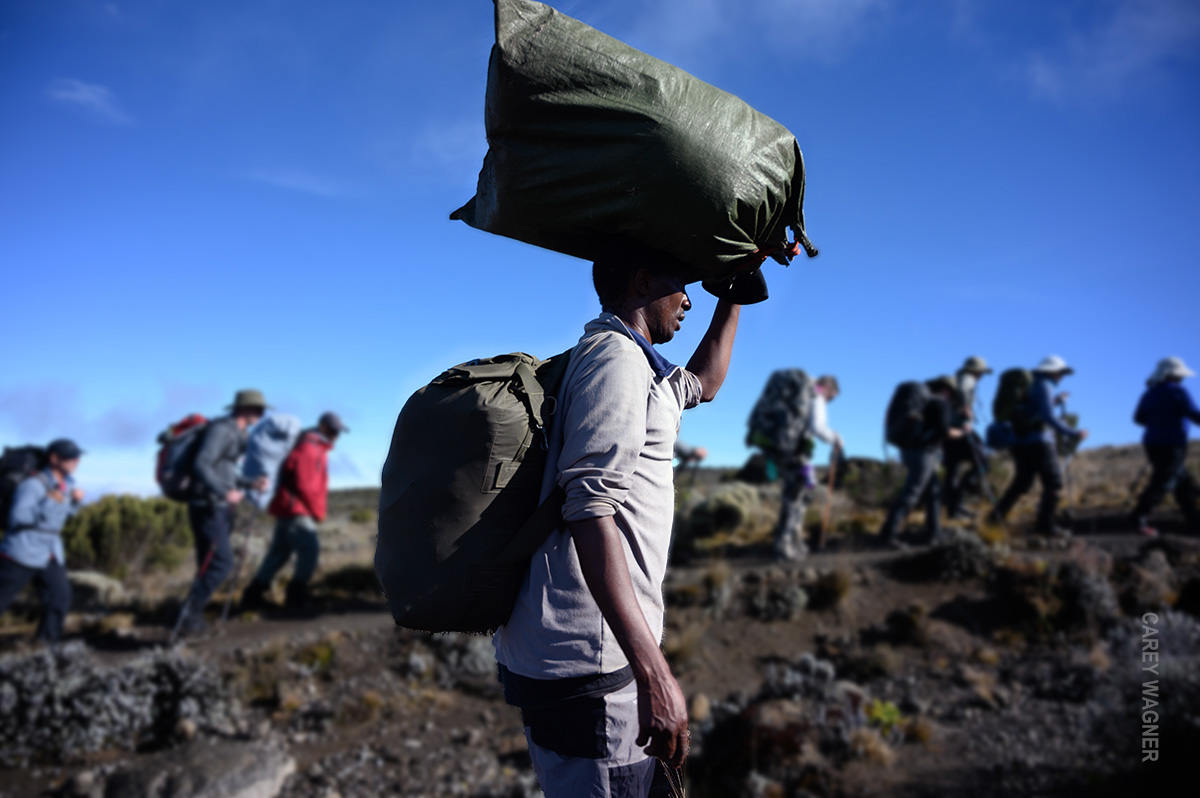
Your boots are laced tight. The rainforest fog is thick. Kilimanjaro’s snow-capped peak looms overhead. It’s day one of your trek, and you’re busy anticipating the challenge that lies before you.
Little do you know about the challenges that lay behind you!
Every Thomson trek requires an enormous amount of logistical organization just to make it to day one. Let alone day two. Or day three.
You may not realize it, but your guides and porters have already moved mountains to ensure you have a 98% chance of summit success. And they’ll continue to move mountains as you climb higher!
Here’s a behind-the-scenes look at what your porters do before, during and after your trek on Mt. Kilimanjaro.
Pre-Trek Prep
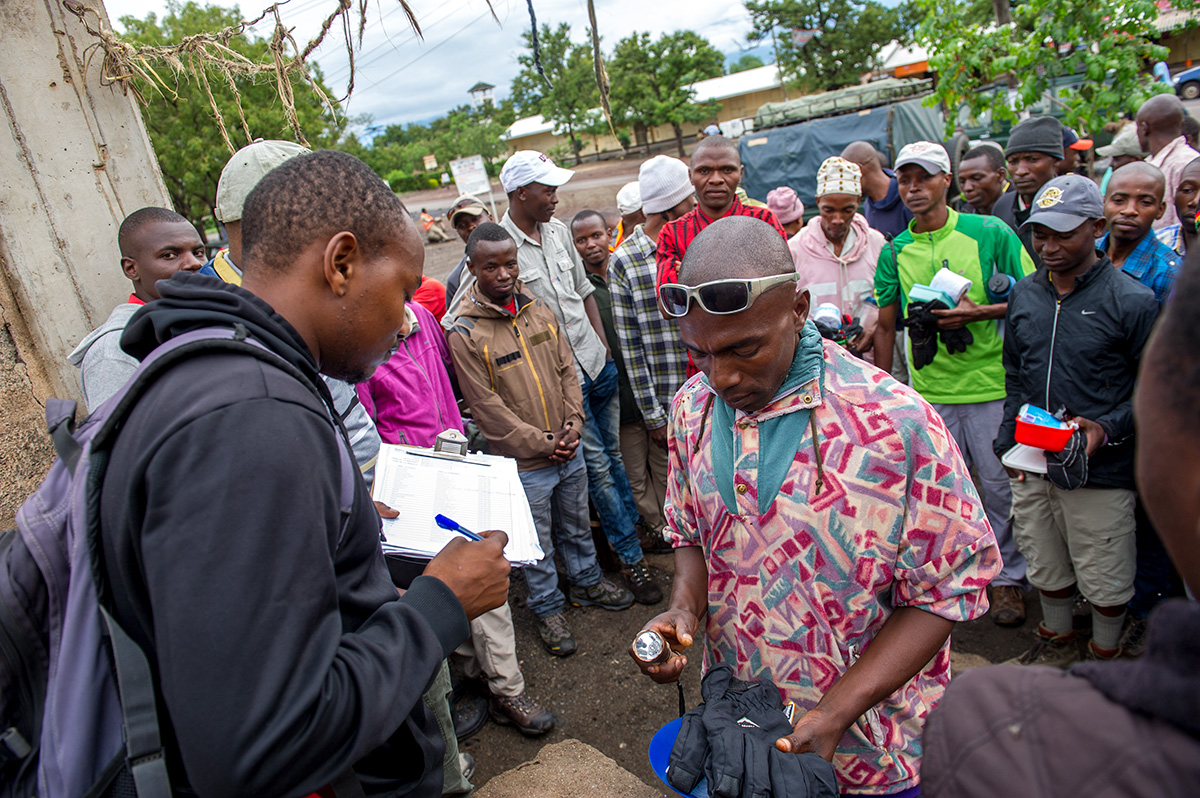
A couple days before your trek, your camp manager and cook meet at the Thomson office in Arusha to meticulously inspect and pack all gear, including:
- Sleeping tents
- Private toilet tents
- Solar-lit dining areas
- Basins for hot water
- Cookstoves
- Hundreds of pounds of food
- Sturdy mountaineering beds with foam mattresses for trekkers on our Grand Traverse route
- And much more!
The team also reviews your trekking group’s dietary restrictions to ensure that all packed food meets your needs.
Day 1
On day one of your trek, your porters (usually 30-40 of them!) assemble at the Thomson headquarters to ensure they’re properly outfitted with high-quality boots, pants, jackets and more. Replacements are offered for worn-out equipment to ensure the porters’ comfort and success.
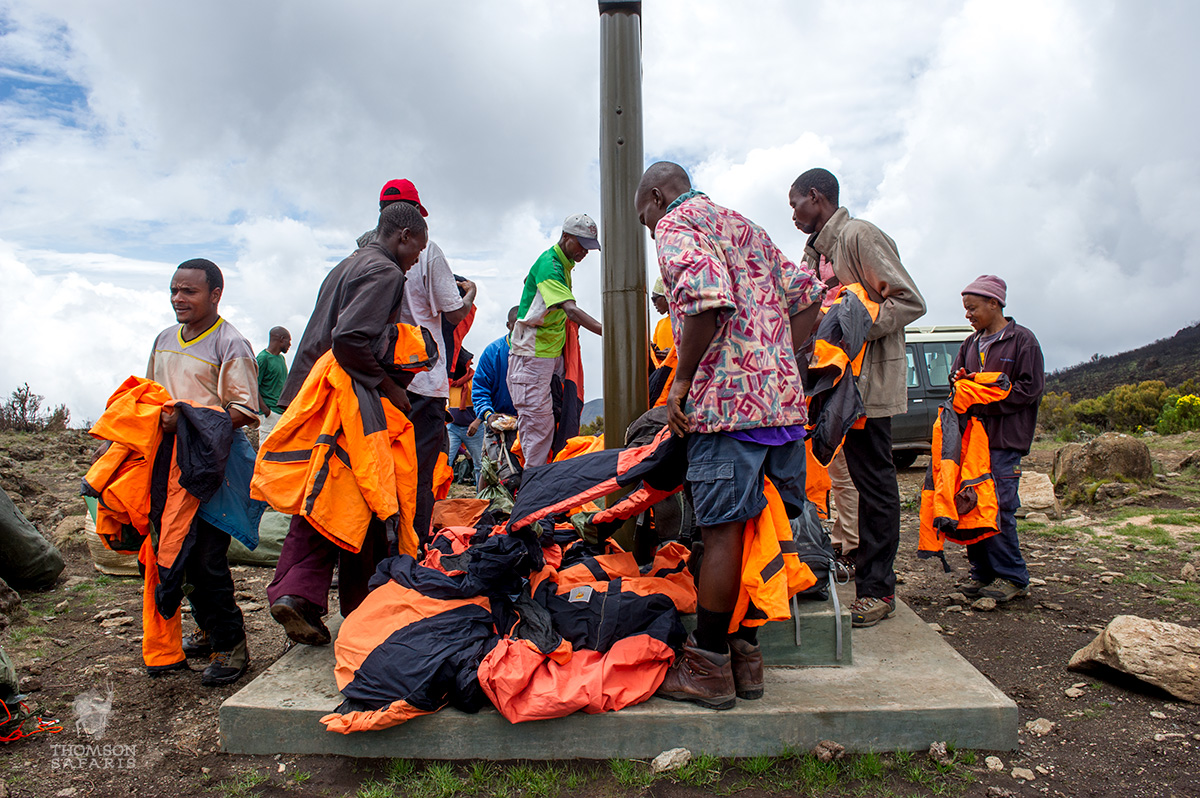
Then, they head by dala dala (a private taxi-bus) to Mt. Kilimanjaro’s entry gate, where they unload and distribute gear. Thomson Safaris, as a founding partner of the Kilimanjaro Porters’ Assistance Project (KPAP), ensures that this weight is split equitably, and that everyone adheres to a strict carrying-weight maximum of 33 pounds per porter. It’s the best way to ensure a safer, responsible climb for everyone.
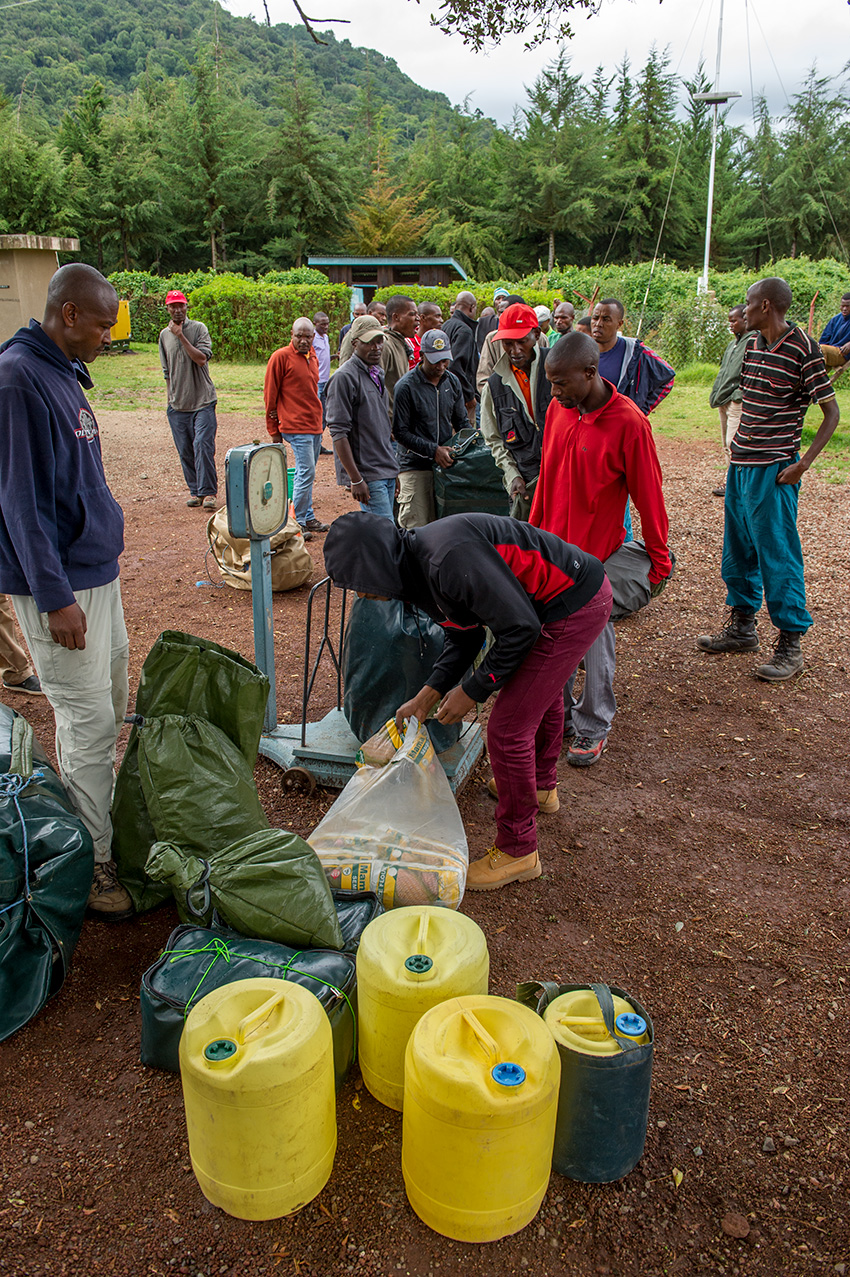
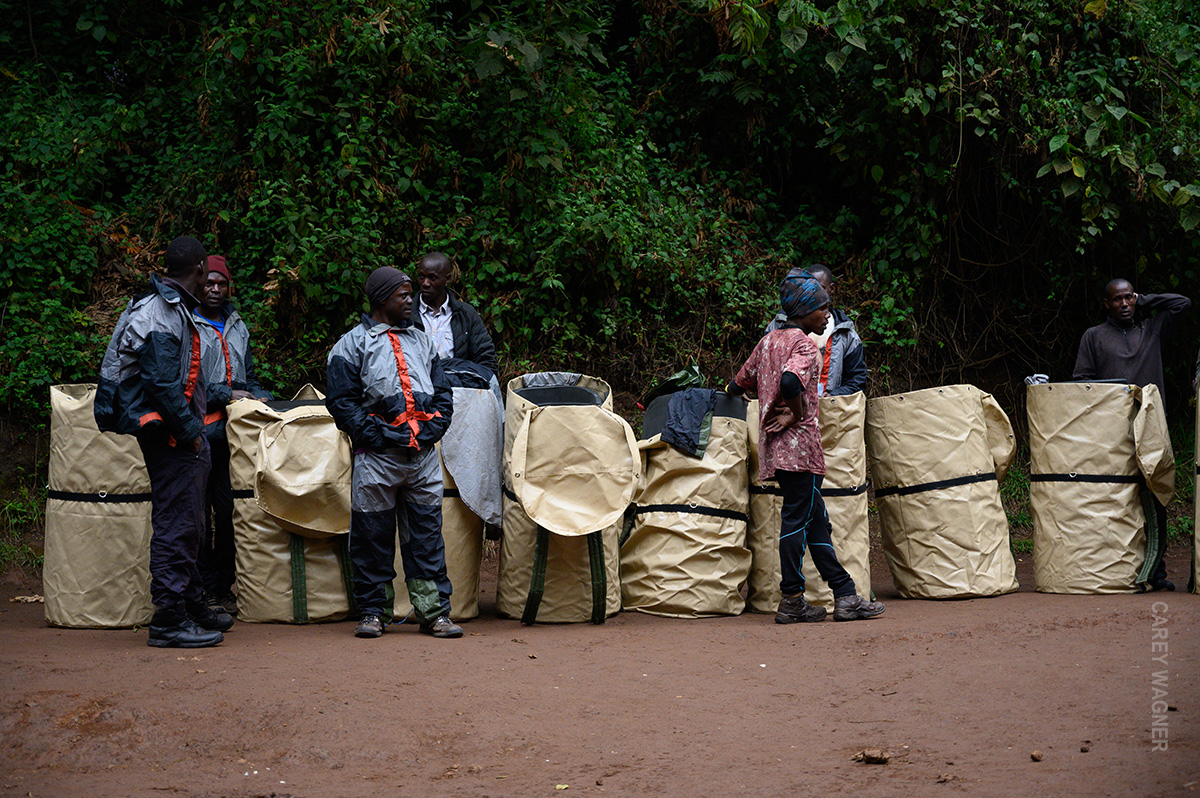
This weight maximum is checked by Kilimanjaro National Park Authorities and Thomson’s porter welfare officer. Then, the porters register at the gate so that fair payment can be distributed once they descend.
Without further ado, the porters head out for the first campsite! Their goal is to have camp set up by the time you arrive.
Days 2, 3, 4, 5…
Each dawn sees the porters up early not only to cook their breakfast, but to cook yours too. While you’re dining on eggs made to order, hashbrowns, hot coffee and more, they’re breaking down camp and packing their kit bags. All bags are weighed again to ensure equitable distribution.
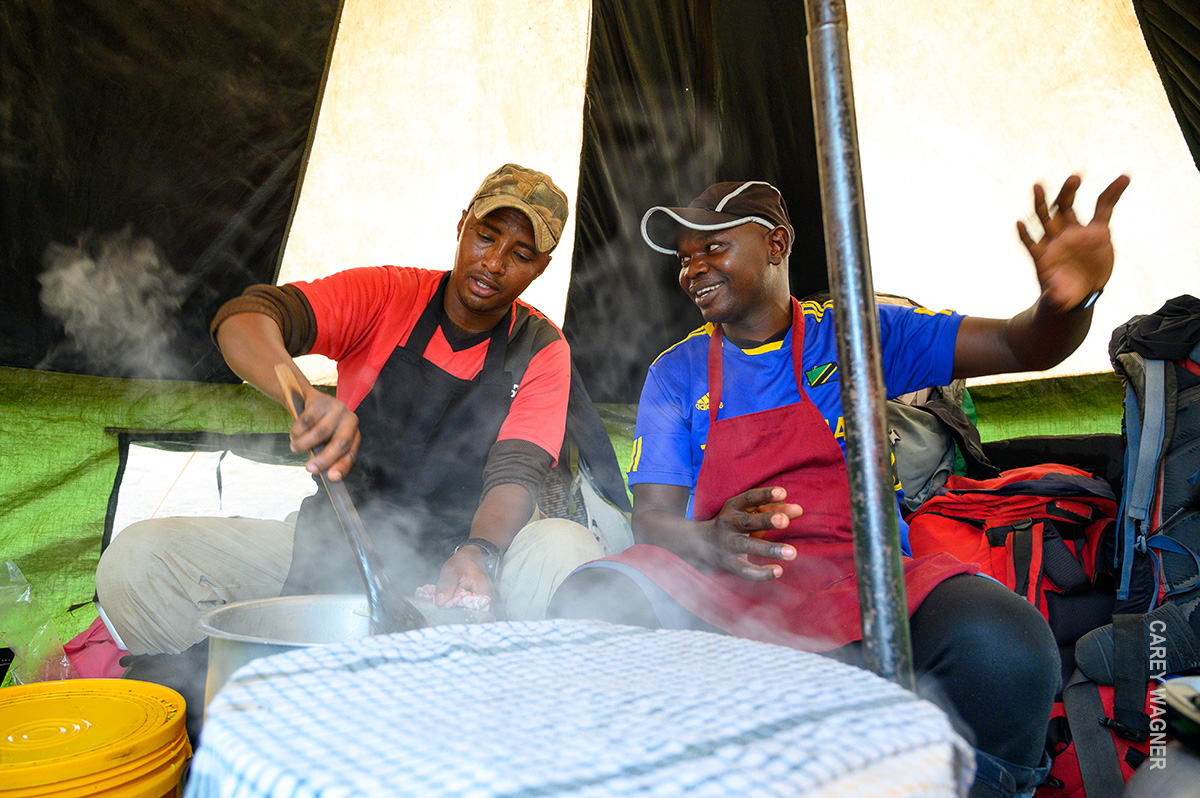
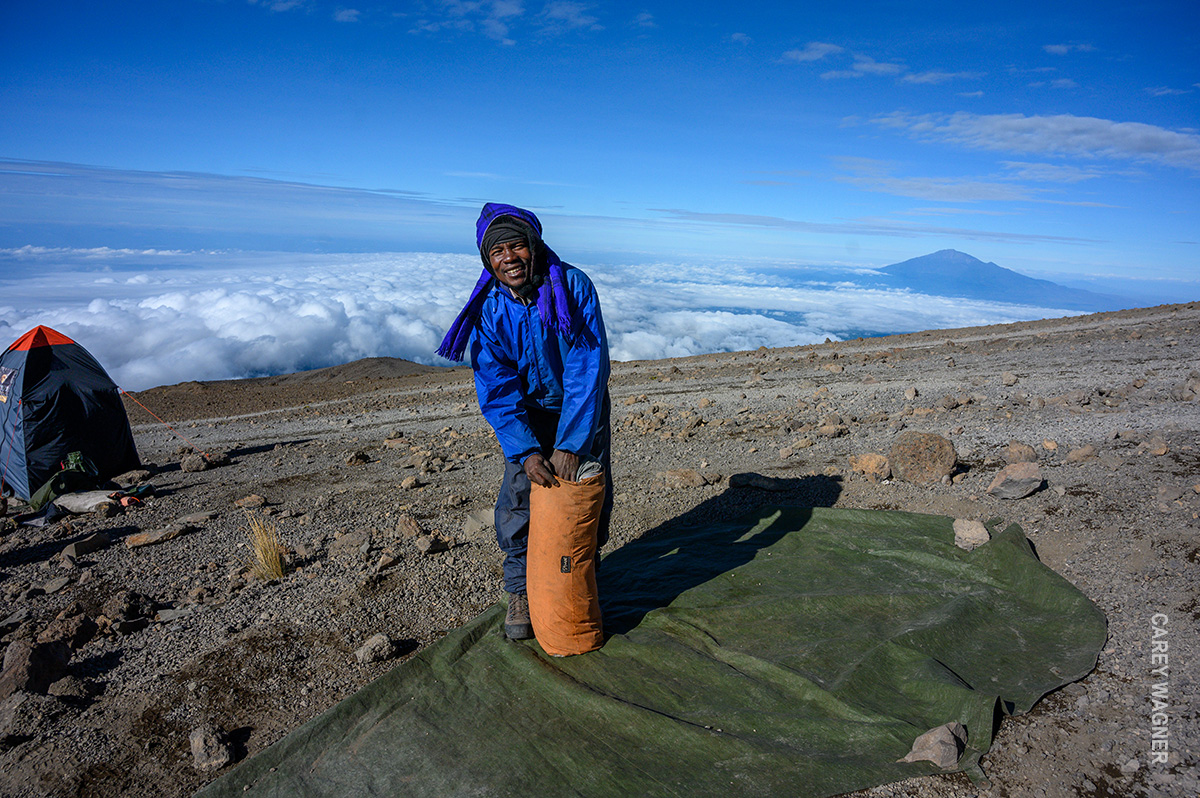
After eating, your porters will take your duffel and trek at swift speeds to the next camp. It’s beneficial for them to arrive as early as possible—they know the spots that’ll keep everyone out of the wind and close to a good view.
The rest of their afternoon unfurls in a whirlwind of cleaning loose rocks from the ground, setting up tents and cooking before your arrival. Their goal is to arrange the Thomson campsite in a close-knit fashion, so that your camp feels like a community.
Then the porters get some well-earned lunch and rest while they wait for you to catch up!
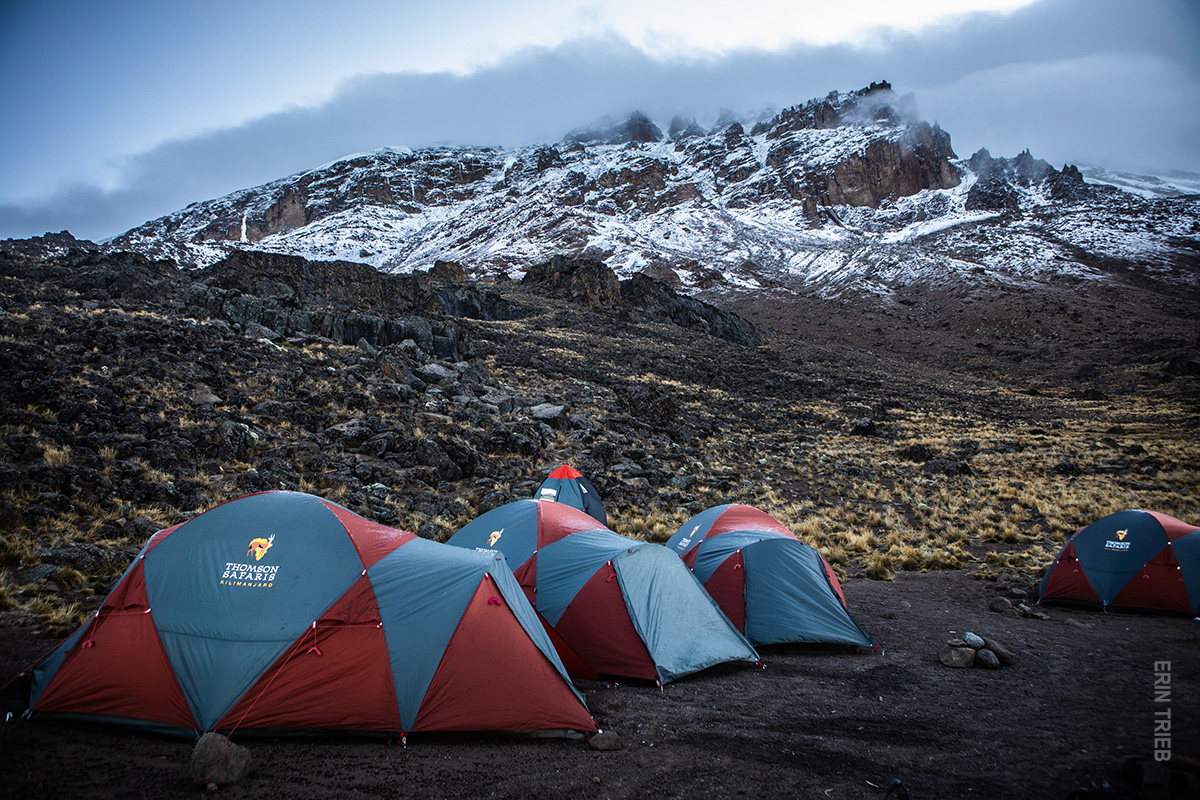
End of the Trek
After your breathtaking summit success and ensuing descent, a time will come when you and your porters split ways. But before you do, they’ll have a song for you: the Jambo song.
Sung by your porters and guides after a successful trek, it’s an endearing finale to your journey, replete with clapping hands, smiling faces and happy voices.
After descent, each porter signs off on another successful trek, receives their pay and returns to the Thomson office to unload their gear and go their separate ways–until next time!
